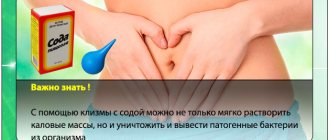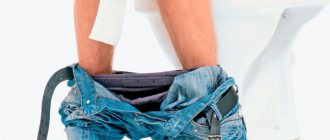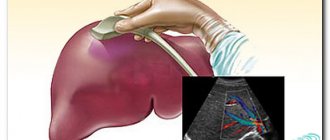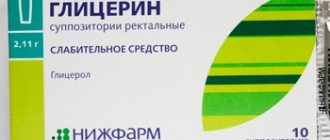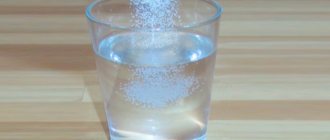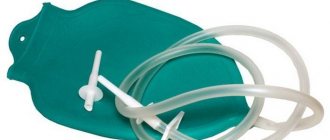A siphon enema is usually performed in a medical facility.
It is used when there is no effect from cleansing, laxative enemas and taking laxatives. Such an enema should be prescribed by the attending physician after a thorough examination and interview of the patient. It is especially important to perform a siphon enema according to the algorithm, since this procedure can lead to complications if the placement technique is violated.
Indications and contraindications for this enema
The indication for performing a siphon enema is the removal of poisons and toxic substances that have entered the body through the mouth. This enema is also used to diagnose intestinal obstruction in some cases. Sometimes a siphon enema is given to patients before intestinal surgery. In addition, this procedure effectively removes all rotting and fermentation products from the large intestine. Contraindications for a siphon enema are acute inflammation in the anal area, bleeding hemorrhoids, rectal tumors, acute colitis, bleeding from the wall of the stomach or intestines, the first days after surgical interventions on the intestines.
Siphon enema: indications, contraindications and possible risks
In order to cleanse the intestines of fecal stagnation, various types of enemas are used, including siphon ones. An enema is the introduction of liquid into the rectum and its subsequent emptying.
A siphon enema is carried out according to a different algorithm: liquid is poured in portions through the anus. And when the water is removed, a new portion is poured in again.
This process occurs until the intestines are completely cleansed of feces.
The procedure is unpleasant, and for some, difficult, so manipulations are best carried out in a comfortable and calm atmosphere.
A few days before the siphon enema, it is recommended to give up harmful foods and alcohol. The diet should be rich in dairy products, vegetables and liquid dishes.
Features of siphon enema
Many experts consider the procedure to be an outdated method of colon cleansing. Despite its effectiveness, siphon enema is more traumatic than other types of enemas.
The procedure is only performed in a hospital if other cleansing methods, such as laxatives or enemas, are ineffective.
First, the doctor conducts a survey and examination of the patient, and after that the procedure is performed according to a clear scheme. Any deviation from the established technology is fraught with complications. Flushing allows you to cleanse the entire colon area. During the procedure, water is poured in and out forcibly, cleansing the lower intestine.
Indications and contraindications for using an enema
Siphon enema is indicated for mechanical and dynamic types of intestinal obstruction, intoxication with metabolic products, in the treatment of poisoning and when other cleansing methods are ineffective.
This technique is used to diagnose intestinal obstruction. But it is worth considering that if the patient suspects or has embolism or thrombosis, treating intestinal obstruction with a siphon enema is prohibited.
The cleansing technique has the following indications for use:
- suspicion of intestinal obstruction;
- partial or complete disruption of the movement of food through the gastrointestinal tract;
- preparation for surgical treatment of the intestine;
- flatulence;
- accumulation of toxic and poisonous substances in the intestines;
- lack of effect from other cleansing methods;
- stagnation of feces.
There are also contraindications to the use of the procedure:
- the first few weeks after intestinal surgery;
- peritonitis;
- abdominal pain of unknown etiology;
- diseases of the intestine or stomach, accompanied by bleeding;
- rectal prolapse;
- acute inflammatory processes of the intestine;
- tumors;
- severe forms of hemorrhoids with prolapse of nodes and bleeding;
- acute inflammatory process in the anus.
The procedure is performed only after a complete examination. Before an enema, you need to exclude the listed pathological conditions.
Siphon enema technique
The technique of performing the procedure comes down to simple manipulations.
- An oilcloth is laid on the couch, one end of it should hang down into a bucket or basin.
- The patient lies on his left side with his legs and back bent.
- The end of the tube is treated with Vaseline, after which it is inserted into the anus 35-40 cm. The nurse’s movements should be slow; the tube is inserted, taking into account all the bends of the intestine. The patient should not experience pain.
- A funnel is screwed to the tube and raised above the body about a meter higher, then 1 liter of solution is poured.
- When the liquid reaches the edge of the funnel, it is lowered to a level below the body.
- It is necessary to wait until the water returns to the funnel from the rectum, after which the liquid must be poured into a bucket.
- The technique is repeated several times: water from the funnel goes into the intestine and returns, the funnel is cleaned and refilled with a clean solution.
- At the final stage, the funnel should be removed and the tube should be left in the intestine for a third of an hour. The second end is lowered into the basin - this is necessary so that the remaining gas and liquid come out.
If pain occurs, the doctor must regulate the pressure of the fluid by pressing the rubber tube. Gas bubbles and feces will be observed in the washing liquid. This is fine. But their absence may indicate intestinal obstruction.
The procedure requires using the entire volume of prepared water. Stop the enema when the return water is clear. After the procedure, the patient needs to rest for at least two hours.
Equipment for siphon enema
To perform a siphon enema you need:
- disposable oilcloth;
- composition for infusion with a volume of 10 liters;
- two-liter bucket;
- oilcloth apron;
- medical gloves;
- basin;
- boiled water;
- funnel 1.5 liters;
- disinfection solution;
- tray;
- Vaseline oil;
- gastric tube with rubber and glass tube.
All items used must be sterile.
How much water will be needed for rinsing
One procedure requires up to 12 liters of liquid. For each person, the volume is individual and depends on the degree of fecal stagnation.
What is important when performing the procedure
For regular enemas, liquid at room temperature is used. Siphon water requires warmer water, at least 40 degrees.
Cold water can cause hypothermia of internal organs, and hot water can cause thermal burns of the mucous membrane. All manipulations must be slow and careful so as not to cause damage or pain or provoke bleeding.
Complications of siphon enema
The procedure is dangerous because if the technique is not followed, there is a high risk of intestinal damage. But this is not the only possible complication. Dissolution of decay products accumulated inside the intestine in liquid can cause intoxication if they are not removed in a timely manner.
Siphon enema technique
Doctors and nursing staff are trained to perform siphon enema. Even if a nurse performs a siphon enema, a doctor will have to be present during the procedure. The device for this enema consists of a special glass funnel with a capacity of 1-2 liters and a system of tubes. How much water is required for an enema becomes clear only during the procedure. For adults, prepare 10-12 liters of clean warm water. Its temperature should correspond to body temperature, that is, 35-36 degrees. It is unacceptable to use hotter water. The siphon enema technique requires that the patient be positioned correctly. The patient lies on the edge of the couch on his left side, bending his knees slightly. The end of one of the tubes is lubricated with petroleum jelly and inserted into the anus to a depth of 20-30 cm. The funnel is held in an inclined position, slightly above the patient’s body near his buttocks. It is filled with water and raised up to a height of about 1 meter from the patient’s buttocks. When the level of decreasing water reaches the top of the funnel cone, it is lowered down without turning it over, and they wait until it is filled with intestinal contents. The dirty water must be drained and the siphon enema must be continued. Colon lavage is continued until clean water appears. Next, the outer end of the tube is placed in a basin for 10-20 minutes to drain the remaining water and remove gases.
Why use siphon enemas?
A siphon enema is a medical procedure that allows you to cleanse the gastrointestinal tract. The manipulation is performed in a medical facility as prescribed by a doctor and in his presence. Intestinal lavage occurs along its entire length. The procedure is carried out by nursing staff, and in terms of technique it is of medium complexity.
When is siphon colon lavage useful?
Cleansing the digestive organ has a healing effect. Repeated portioned administration of liquid allows you to completely free the intestines from toxins.
Indications for performing a siphon enema:
- removal of poisons and toxins for various poisonings;
- fecal impaction due to prolonged constipation;
- checking for intestinal obstruction;
- surgery on the intestines;
- achieving a therapeutic effect (rinsing with mineral water).
Contraindications:
- inflammatory processes in the stomach;
- acute peritonitis;
- rectal cancer and prolapse;
- bleeding in the digestive tract.
If, against the background of dyspeptic manifestations in the form of severe abdominal colic, nausea and vomiting, non-tumor formations (fecal stones) are diagnosed, their removal with a siphon enema gives a good result. The body is freed from waste products. Normalization of metabolism leads to improvement of peristalsis, absorption capacity of the digestive tract, and general condition.
The principle of operation and method of performing a siphon enema
Siphon intestinal lavage is based on the principle of communicating vessels. One of them is the large intestine, the other is the funnel at the end of a rubber probe inserted into the intestine.
Note! The cleansing procedure is easier if the patient is switched to a diet 2-3 days before washing. The preparation period is accompanied by the consumption of fermented milk products, water-based cereals, vegetables, fruits, and vegetarian soups.
List of required tools
Equipment for siphon lavage of the large intestine:
- a couch with a hard surface and covered with oilcloth;
- siphon enema system: funnel with a volume of 1–1.5 l, 2 rubber probes connected by a glass tube 1–1.5 m long;
- 1 liter mug;
- container that holds up to 12 liters of liquid;
- basin for used water;
- large diaper, napkins;
- tray;
- apron, rubber gloves, robe.
For medications, you will need sterile Vaseline, a disinfectant solution for treating the funnel and instrument table.
Liquid preparation and volume determination
A siphon enema is carried out with ordinary or mineral water, 1% sodium chloride solution, 5% sodium bicarbonate solution. The choice of liquid for rinsing depends on the indications and purpose of the event.
The volume of the clyster should be at least 10–12 liters. Lavage is done until clean water leaves the intestines. Use water with a temperature of 38–40 degrees.
Procedure algorithm
Siphon enema system
Siphon bowel cleansing is a difficult manipulation for the patient. The person is prepared psychologically: the essence of the procedure is explained and consent is obtained for it.
Algorithm:
- The patient first visits the toilet and lies down on the couch. Takes a lying position on your left side with your legs pulled up to your stomach. The oilcloth should hang into the wash basin.
- The funnel and probe are treated with a disinfectant solution.
- The end of the siphon enema probe is treated with petroleum jelly and inserted to a depth of 40 cm. Monitoring of the correct position of the tube in the rectum is carried out by a specialist using a digital examination.
- The funnel is lowered to the level of the patient’s buttocks and slightly tilted to prevent spontaneous absorption of air into the intestinal tube. In this position, the enema is filled with liquid in a volume of 1–1.5 liters, followed by a slow rise of the funnel to a height. Water begins to go into the intestines. The liquid tolerance level is up to the filling hole of the funnel.
- The funnel slowly lowers below the patient's body and is filled with liquid with excrement and gas bubbles pouring back. If the water remains clear, without signs of gas passing, this is a symptom of intestinal obstruction.
- Dirty rinsing water is poured into an appropriate container. The procedure is repeated many times until clear liquid appears. Monitoring of the amount of water introduced and output is mandatory.
Rinsing takes up to 1.5 hours, depending on the contamination of the digestive tract. At the end of the manipulation, the funnel is disconnected from the system, and the free end of the probe is lowered into the pelvis. The tube remains inside the organ for up to half an hour to release the remaining feces, water and gas, then is slowly removed from the rectum.
Remnants of Vaseline are removed from the anus and the genitals are hygienically treated. A competent technique for performing a siphon enema allows you to cleanse the intestines: remove excrement, food debris and fecal stones that have formed due to dysfunction of the gastrointestinal tract.
Important! During the manipulation, the doctor is obliged to constantly maintain verbal contact with the patient and monitor his well-being.
Complications after the procedure
Only a specialist can give an enema in a medical institution or sanatorium.
Blood pressure measurement
Incorrect actions of medical staff lead to complications:
- trauma to the intestinal mucosa with subsequent bleeding;
- perforation of the intestinal tube;
- water intoxication with the subsequent appearance of swelling, high blood pressure, and dysfunction of internal organs.
Fluid that enters the intestines can enter the bloodstream and cause an increase in blood volume. The process is dangerous to health - it disrupts the functions of all body systems.
Attention! Taking into account the complexity of the siphon enema technique and the risk of complications, performing the procedure at home is prohibited.
Distinctive features from a regular enema
The main differences between siphon intestinal lavage and cleansing enema:
- The volume and level of release of the intestinal tube from excrement. Simple cleansing of the organ removes feces only from the lower section, and siphon lavage of the intestines occurs through the entire digestive tract.
- Volume of liquid used. With a cleansing enema, about 1.5 liters are administered, with a siphon procedure - up to 10–12 liters.
- Introduction and removal of water into the intestines. With a siphon enema, the process occurs naturally according to the principle of communicating vessels. With a regular enema, fluid is forced and removed.
Properly performed siphon lavage of the intestines, although it causes discomfort during the procedure, significantly improves the patient’s condition. Stimulating the function of the digestive organs leads to weight loss, better absorption of nutrients, increased body resistance, and relief of negative clinical manifestations from the intestines.
Pulmonologist, Therapist, Cardiologist, Functional Diagnostics Doctor. Doctor of the highest category. Work experience: 9 years. Graduated from Khabarovsk State Medical Institute, clinical residency in therapy. I am engaged in the diagnosis, treatment and prevention of diseases of internal organs, and also conduct medical examinations. I treat diseases of the respiratory system, gastrointestinal tract, and cardiovascular system. Bespalova Irina Leonidovna published articles: 515
Source: https://ObOtravlenii.ru/detoksikatsiya/sifonnaya-klizma.html
Important points in the technique of performing a siphon enema
This procedure is quite unpleasant for the patient. The psychological aspect of preparing the patient is especially important. You need to talk to him in advance about the upcoming siphon enema, establish a trusting and confidential relationship.
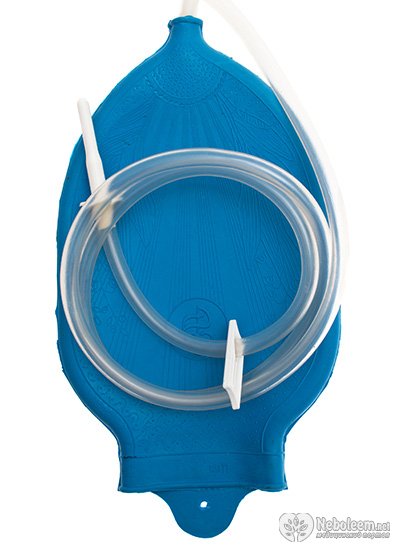
To avoid psychological stress, it is important to carefully isolate the room for performing such an enema. Despite the fact that the intestines are never sterile, a siphon enema must be performed according to all the rules of asepsis and antisepsis. This procedure is currently positioned as a preventive procedure in some paid health centers. It is recommended for a whole range of diseases and even just to rid the body of toxins. Of course, such use of siphon enemas is not recommended by traditional medicine. The most common and not the most dangerous complications of such uncontrolled use of an enema can be dysbacteriosis, impaired intestinal motor function, and constipation.
